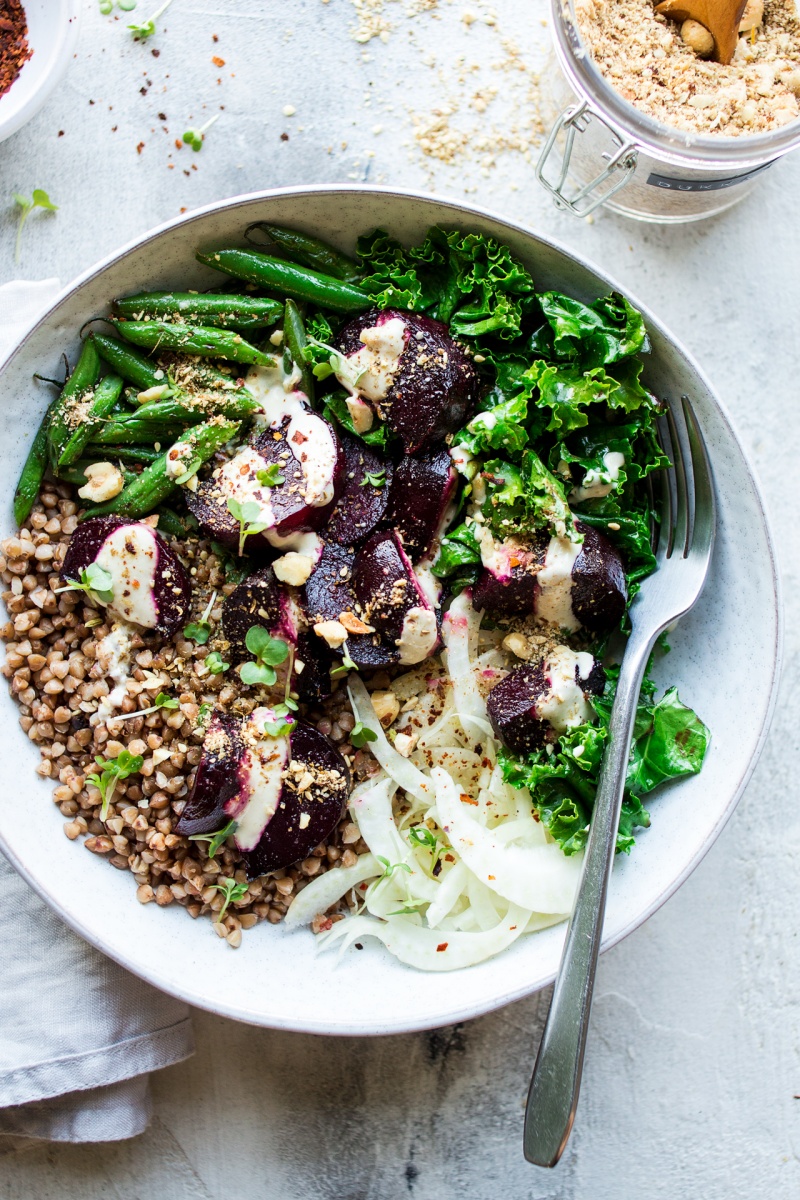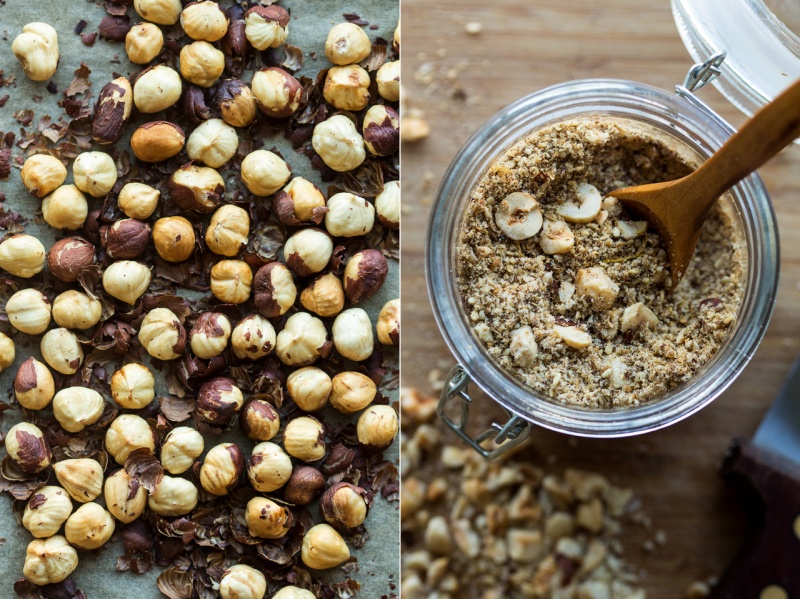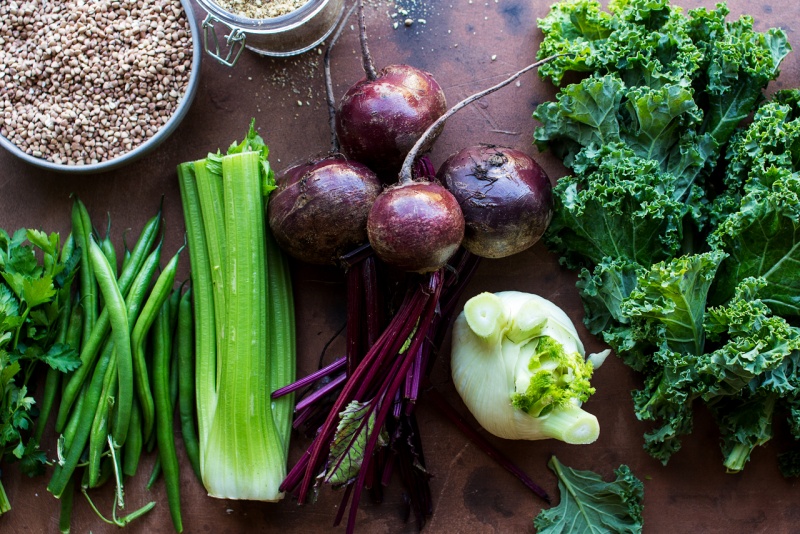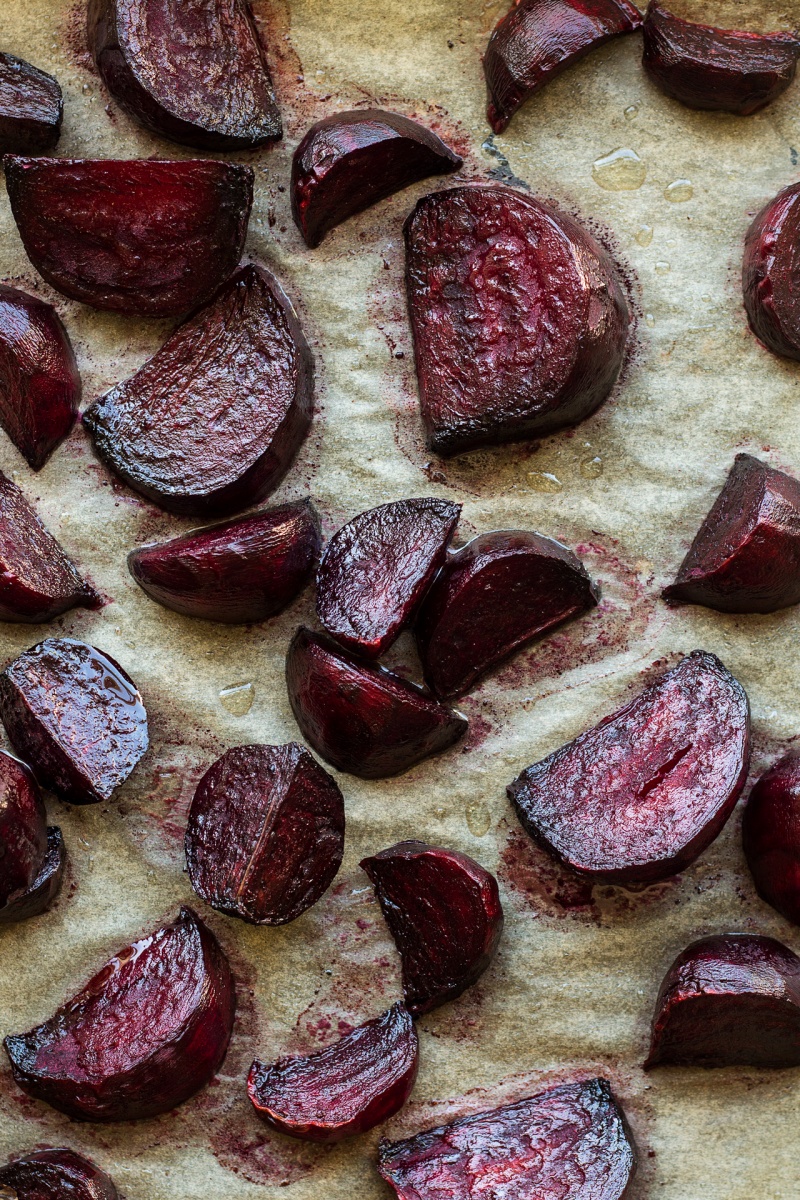Thanks to everybody who sent me lovely messages of support after my Saturday post. I wasn’t fishing for sympathy, but equally I wanted to keep things real and not pretend that I wasn’t in the state of mind I was. It’s one of these things. I sometimes wonder why I keep on coming up against the same issues over and over again, but then I remind myself that everyone’s life has challenges and dealing with mental health issues seems to have been the card I drew. It could be better, but it also could be worse and I try to remember that. I have a supportive husband who always believes in me, even if I don’t believe in myself and an affectionate cat who warms up my (perpetually cold) feet when I sleep, so I am a lucky lady, really.
Today’s dish is a concoction inspired by things I used to eat in my childhood with some Middle-Eastern influences: tangy and creamy tahini sauce and a fragrant spice and nut mix – Egyptian dukkah (or duqqa). While making this recipe, I have made quite a discovery. Roasted buckwheat available in health stores in the UK is not the same as the roasted buckwheat that I am familiar with. They both look the same, but once cooked they are very, very different. Ahead of the photoshoot, I scoured Bristol’s health stores in search of roasted buckwheat groats and as I managed to find them in the second store I checked, I was chuffed. They looked right, so I didn’t bother testing them until the day of the photoshoot. Yet when I attempted to cook them on the day, they turned into a nasty looking mash within 5 minutes, despite using the same cooking method I always have. I tried again just to be sure I hadn’t made a mistake when measuring the water (I use 1:1.5 buckwheat to water ratio) and I got the same result. Growing more and more puzzled and desperate, I tried 2 more times (tweaking the method a little) hoping to achieve the correct texture, but no such luck. I started questioning my sanity, so I asked Google and it turns out that other people have also noticed this when buying roasted buckwheat grouts abroad. I put my shoes and coat on and ran to a Polish deli nearby, which I suddenly remembered about. I came home and did another test with the Polish brand of roasted buckwheat and this time the buckwheat was cooked to perfection. Go figure. I am not sure where the difference lies exactly, I am guessing it must be the way the grouts are processed / toasted, but it is clear to me that the difference is massive. I would say that unless you can find Polish (or Russian – I used a few Russian brands while living on Paros), do not bother with roasted buckwheat unless tasteless gloopy mash is your thing. Once cooked, it should be light and nutty with distinctly separate grains. You can replace it with quinoa, barley or farro, but bear in mind that the last two are not gluten-free.
2 tbsp tahini 1 small garlic clove, finely grated water juice of ½ small lemon, adjust to taste salt and pepper, adjust to taste
REMAINING INGREDIENTS
300 g / 10 oz beetroots 2 tbsp olive oil ½ cup roasted buckwheat* (GF-certified if required) or quinoa salt 100 g / 3.5 oz kale 100 g / 3.5 oz long green beans ½ small fennel or 2 celery sticks, thinly sliced
BOWLS



